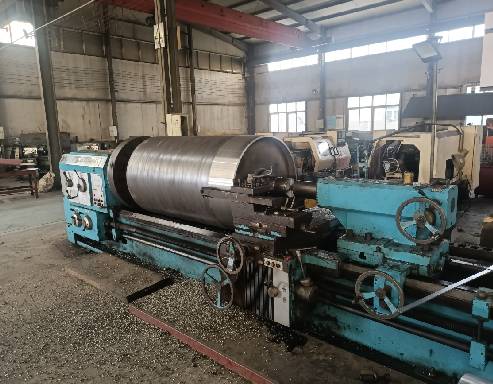 Afrikaans
Afrikaans  Albanian
Albanian  Amharic
Amharic  Arabic
Arabic  Armenian
Armenian  Azerbaijani
Azerbaijani  Basque
Basque  Belarusian
Belarusian  Bengali
Bengali  Bosnian
Bosnian  Bulgarian
Bulgarian  Catalan
Catalan  Cebuano
Cebuano  Corsican
Corsican  Croatian
Croatian  Czech
Czech  Danish
Danish  Dutch
Dutch  English
English  Esperanto
Esperanto  Estonian
Estonian  Finnish
Finnish  French
French  Frisian
Frisian  Galician
Galician  Georgian
Georgian  German
German  Greek
Greek  Gujarati
Gujarati  Haitian Creole
Haitian Creole  hausa
hausa  hawaiian
hawaiian  Hebrew
Hebrew  Hindi
Hindi  Miao
Miao  Hungarian
Hungarian  Icelandic
Icelandic  igbo
igbo  Indonesian
Indonesian  irish
irish  Italian
Italian  Japanese
Japanese  Javanese
Javanese  Kannada
Kannada  kazakh
kazakh  Khmer
Khmer  Rwandese
Rwandese  Korean
Korean  Kurdish
Kurdish  Kyrgyz
Kyrgyz  Lao
Lao  Latin
Latin  Latvian
Latvian  Lithuanian
Lithuanian  Luxembourgish
Luxembourgish  Macedonian
Macedonian  Malgashi
Malgashi  Malay
Malay  Malayalam
Malayalam  Maltese
Maltese  Maori
Maori  Marathi
Marathi  Mongolian
Mongolian  Myanmar
Myanmar  Nepali
Nepali  Norwegian
Norwegian  Norwegian
Norwegian  Occitan
Occitan  Pashto
Pashto  Persian
Persian  Polish
Polish  Portuguese
Portuguese  Punjabi
Punjabi  Romanian
Romanian  Russian
Russian  Samoan
Samoan  Scottish Gaelic
Scottish Gaelic  Serbian
Serbian  Sesotho
Sesotho  Shona
Shona  Sindhi
Sindhi  Sinhala
Sinhala  Slovak
Slovak  Slovenian
Slovenian  Somali
Somali  Spanish
Spanish  Sundanese
Sundanese  Swahili
Swahili  Swedish
Swedish  Tagalog
Tagalog  Tajik
Tajik  Tamil
Tamil  Tatar
Tatar  Telugu
Telugu  Thai
Thai  Turkish
Turkish  Turkmen
Turkmen  Ukrainian
Ukrainian  Urdu
Urdu  Uighur
Uighur  Uzbek
Uzbek  Vietnamese
Vietnamese  Welsh
Welsh  Bantu
Bantu  Yiddish
Yiddish  Yoruba
Yoruba  Zulu
Zulu Understanding the Function and Importance of Drive Shaft Pulleys in Vehicles
Understanding Drive Shaft Pulleys Function, Design, and Applications
Drive shaft pulleys are critical components in various mechanical systems, playing an essential role in power transmission and drive system efficiency. Whether in automotive applications, industrial machinery, or agricultural equipment, understanding the design and function of drive shaft pulleys can help in optimizing performance and ensuring effective operation. This article explores the purpose, types, design considerations, and applications of drive shaft pulleys.
Function of Drive Shaft Pulleys
At their core, drive shaft pulleys are designed to transmit power from one part of a machine to another. They convert the rotary motion of an engine or motor into usable energy that moves or powers different components. Pulleys are crucial in applications where belts, chains, or cables are used to transfer this motion. In essence, they serve as a connection point that allows torque and rotational energy to be efficiently transferred.
When the drive shaft, attached to an engine or motor, rotates, it communicates this rotational force to the pulley. The pulley then, in turn, drives a belt or chain that may be connected to various components like generators, alternators, or ancillary machines. This setup not only optimizes power distribution but also helps in managing the mechanical load and reducing wear on the components involved.
Types of Drive Shaft Pulleys
Drive shaft pulleys come in various shapes and sizes, each designed for specific applications. The common types include
1. V-belt Pulleys These have a distinct V-shaped groove that allows for optimal grip with V-belts, making them suitable for high-torque applications like engines in vehicles.
2. Flat Pulleys Flat pulleys have a smooth surface and are generally used in lighter applications, mainly where the belt's load is not as substantial.
3. Timing Pulleys Often used in synchronous systems, timing pulleys feature teeth that engage directly with a toothed belt, ensuring that the drive system maintains precise timing, which is critical in high-performance machinery.
drive shaft pulley

4. Idler Pulleys These do not transmit power directly but are used to guide and tension belts or chains. Idler pulleys are essential for maintaining the correct tension in belt-driven systems, thereby prolonging belt life and ensuring efficient operation.
Design Considerations
Designing a drive shaft pulley involves several considerations to ensure optimal performance. One key factor is the material used in construction. Pulleys are often made from materials like aluminum, plastic, or steel, each offering varying degrees of strength, weight, and durability.
Another important aspect is the size and weight of the pulley, which impacts the overall efficiency of the drive system. A well-designed pulley should minimize rotational inertia, thus allowing for smooth acceleration and deceleration. The diameter of the pulley directly affects the speed and torque output, making it critical to match the pulley size appropriately with the engine or motor specifications.
Finally, the alignment of the pulley within the drive system is crucial for minimizing wear and maximizing efficiency. Misalignment can lead to premature failure of belts and components, resulting in costly maintenance and downtime.
Applications
Drive shaft pulleys find use in numerous applications across various industries. In the automotive sector, they are integral to the functioning of engines, alternators, and air conditioning systems, ensuring that power is effectively transmitted from the engine to the required components.
In industrial settings, drive shaft pulleys are used in conveyor systems, pumps, and other machinery, helping to streamline operations and enhance productivity. Moreover, in agricultural machinery, pulleys play a crucial role in equipment like tractors and harvesters, ensuring that vital functions like tilling, plowing, and planting are efficiently executed.
Conclusion
Drive shaft pulleys may be simple mechanical components, but their role in power transmission is vital across different sectors. Understanding their function, types, design considerations, and applications not only helps in maintaining existing machinery but also aids in the design and development of more efficient systems. As technology continues to evolve, the role of drive shaft pulleys will likely expand, leading to even greater innovations in mechanized systems.
-
Revolutionizing Conveyor Reliability with Advanced Rubber Lagging PulleysNewsJul.22,2025
-
Powering Precision and Durability with Expert Manufacturers of Conveyor ComponentsNewsJul.22,2025
-
Optimizing Conveyor Systems with Advanced Conveyor AccessoriesNewsJul.22,2025
-
Maximize Conveyor Efficiency with Quality Conveyor Idler PulleysNewsJul.22,2025
-
Future-Proof Your Conveyor System with High-Performance Polyurethane RollerNewsJul.22,2025
-
Driving Efficiency Forward with Quality Idlers and RollersNewsJul.22,2025





























